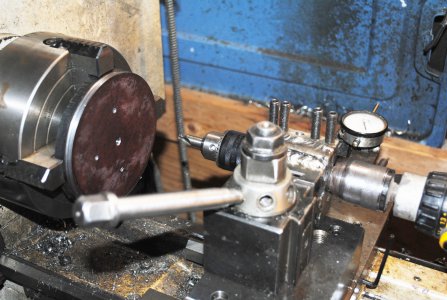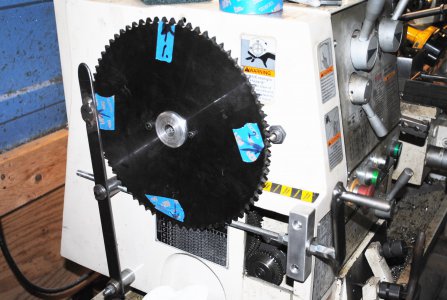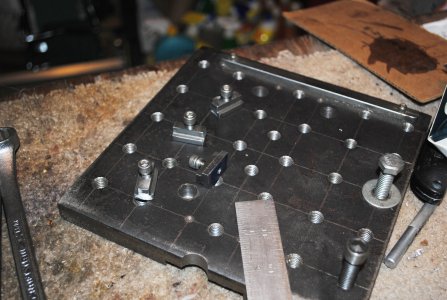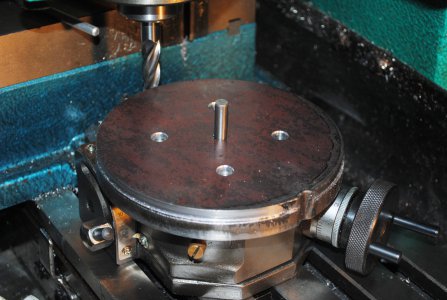I believe there are two places where the lash adjustments can occur, at least on these small tables. The first is the interface between the gear and the worm, and this (at least on my table) is adjusted by rotating the entire dial assembly in the casting. The dial wheels are keyed to the worm shaft, but the shaft itself passes through a collar that is eccentric. To adjust the gear-worm clearance you rotate this collar within the casting to bring the mesh either closer together or further apart. You need to re-position your ‘zero’ hash mark plate slightly after doing this.
The second place is a small dog pin that (again, on my table) came in from the bottom of the casting. It is shaped like a small tab on the end, and this tab is supposed to engage a groove cut into the eccentric collar thereby holding it and the dials into the casting. When I took a look at this pin in mine it was all goofy and shaped with a taper that caused the fit in the groove to be very loose.
After some thought, I concluded that the design feature here was to make it loose fit in the groove and to incorporate a set screw so that you could turn the pin so two corners of its tab engage opposite sides of the groove thereby “reducing” clearance. Um, I didn’t see that lasting for too long so I completely rebuilt that pin with a precisely fitted tab to match the groove. It took some fiddling, yes, but there is no more monkeying with trying to twist a tab to fit the groove and try to lock it in place with a dinky little set screw. Plus, how long would you expect a zero clearance to be maintained if the only bearing points are two corners of an unhardened pin! If the fit of the tab in the groove is loose, the collar can slip in and out of the casting and regardless of how close you have the gear and worm the backlash is still there.
-frank









